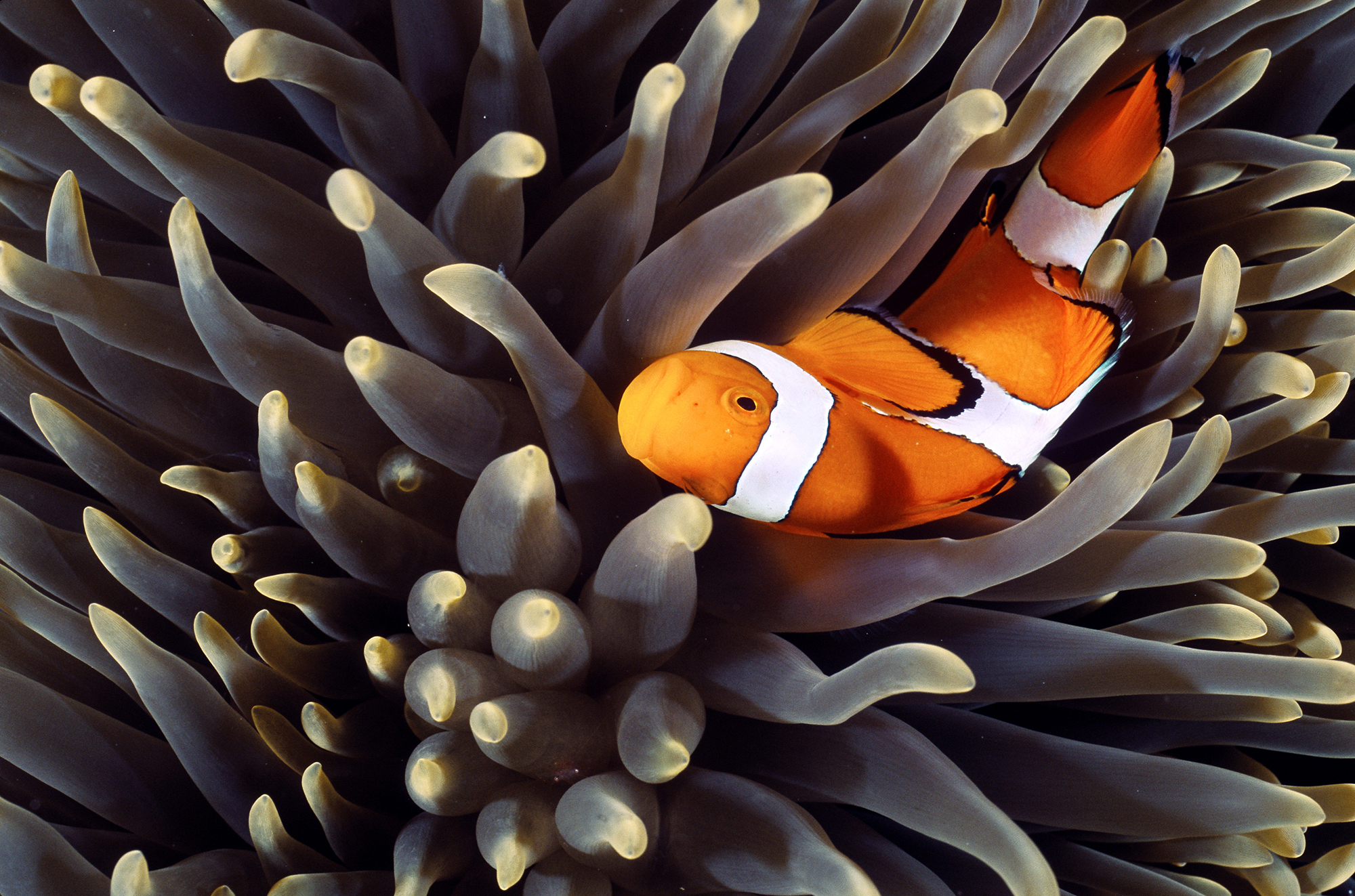A symbiotic relationship is a type of relationship between two organisms that live in close proximity with each other and are mutually beneficial. Symbiosis can be seen in many different types of relationships, including mutualism, commensalism, and parasitism. In a mutualistic relationship, both organisms benefit from the exchange; for example, a clownfish living among anemones receives protection from predators while also providing food to the anemone by eating algae near them.
Commensalism involves one organism benefiting without affecting the other; for instance, some species of birds use trees as perches without damaging them or taking resources away from them. Parasitism is when one organism benefits at the expense of another; ticks feed on blood from mammals but do not provide any benefit back to their hosts. All three forms have been observed in nature and are referred to as symbiotic relationships due to their interdependent nature.
A symbiotic relationship is a type of relationship between two different species that benefits both organisms in some way. This could include mutualism, where both species benefit from the arrangement, commensalism, where one organism benefits and the other is not affected, and parasitism, where one organism benefits while the other is harmed. Symbiotic relationships are essential for ecosystems to function properly as they help to maintain balance within an environment.
Symbiotic Relationships
Symbiotic Relationship Example
A great example of a symbiotic relationship is the one between clownfish and sea anemones. The clownfish lives among the tentacles of the sea anemone, which protects it from predators and provides food; in return, the clownfish defends its host by warning it about predators or chasing them away with its bright colors. In addition to this mutualistic relationship, both organisms benefit from each other’s waste products as well.
Symbiotic Relationship Examples in Humans
Humans can have symbiotic relationships with other humans, animals, and even plants. A classic example of a symbiotic relationship between humans and another species is that of beekeepers and bees: the beekeeper provides the hive with protection from predators, a safe home for their colony, and access to food sources; in return, the bees produce honey which the beekeeper harvests for sale or personal use. Another example is farmers who keep livestock such as cows or sheep; in exchange for providing them with food and shelter, they get milk products like cheese or yogurt as well as wool used to make clothing items.
Finally, there are numerous examples of beneficial relationships between gardeners and wildflower pollinators like butterflies or hummingbirds – these creatures help spread pollen around gardens while getting nectar from flowers in return.
Symbiotic Relationship in Humans
Humans often participate in symbiotic relationships, which are mutually beneficial interactions between two organisms. Examples of this type of relationship include the microbiome in humans and their gut bacteria; this is a form of mutualism where both organisms benefit from each other as the bacteria provide essential nutrients to help with digestion while humans provide shelter, food, and a safe environment for them to live. Additionally, many people have close personal relationships that can be seen as examples of symbiosis because they rely on one another emotionally or physically for support or assistance.
Parasitic Relationship
A parasitic relationship is a type of symbiotic relationship between two organisms in which one organism, the parasite, benefits at the expense of the other, known as the host. A wide variety of parasites exist, from tiny single-celled organisms to large animals such as fleas and ticks. The effects of parasitism on the host can range from minor to severe depending on the species involved.
Types of Symbiotic Relationship
Symbiotic relationships are a type of relationship in which two different species interact and benefit from each other. There are three main types: mutualism, commensalism, and parasitism. In mutualism, both species benefit from the interaction; in commensalism, one species benefits while the other is not affected; and in parasitism one species benefits at the expense of another.
Symbiotic relationships can be found all over nature, including among animals, plants, fungi and bacteria.
What is Symbiosis
Symbiosis is a type of relationship between two species in which both organisms benefit. This can include mutually beneficial relationships like mutualism, where both species receive benefits from each other, or commensalism, where one organism benefits and the other is not significantly affected either way. By working together in this way, symbiotic relationships enable species to survive and thrive by providing them with food, shelter and protection.
Commensalism Symbiotic Relationship
Commensalism is a type of symbiotic relationship in which one organism benefits while the other remains unaffected. This relationship can be seen when an animal species lives on or near another species, such as barnacles living on whales or birds nesting in trees. In these examples, the animals benefit from the protection and resources provided by their host but do not have any negative impact on them.
Commensalism is a beneficial relationship for both organisms involved and can play an important role in maintaining biodiversity in ecosystems.
Commensalism Symbiotic Relationship Examples
Commensalism is a type of symbiotic relationship where one species benefits from the other without affecting it. Some examples of commensalism are cattle egrets following cows around to eat any insects that may be disturbed by their movement, barnacles attaching themselves to whales and sharks for transportation and protection, a remora fish sticking itself onto larger marine animals like dolphins or whales in order to get food they disturb while feeding, and epiphytic plants growing on tree branches without taking away any nutrients.

Credit: sites.google.com
What are the 5 Symbiotic Relationships?
Symbiotic relationships are when two organisms of different species interact with and benefit from one another. The five main types of symbiosis include mutualism, commensalism, parasitism, amensalism, and protocooperation. Mutualism is a relationship in which both organisms benefit from the exchange of resources; commensalism is when one organism benefits while the other remains unharmed; parasitism involves one organism benefiting while the other is harmed; amensalisms occur when one species inhibits or even kills another without directly benefiting itself; and protocooperation occurs between two members of the same species to help each other survive.
Each type plays an important role in nature and helps maintain balance within ecosystems.
What is the Meaning of a Symbiotic Relationship?
A symbiotic relationship is a type of close, mutually beneficial relationship between two different species. Symbiotic relationships can be either mutualistic or parasitic in nature, with both species receiving some sort of benefit from the association. Mutualistic relationships are most common, whereby both organisms benefit from the interaction and their respective needs are met.
For example, many plants have a symbiotic relationship with fungi that help them absorb nutrients better through a process known as mycorrhizal associations. Other types of mutualism exist between animals such as ants and aphids where ants protect aphids from predators in exchange for honeydew produced by the aphids; this is an example of commensalism. Parasitism occurs when one organism benefits at the expense of another; for instance fleas living on dogs or cats feed off their host’s blood while providing no real benefit to them in return.
What is And Example of a Symbiotic Relationship?
A symbiotic relationship is an interaction between two living organisms that benefits both parties. A classic example of a symbiotic relationship is the one between a clownfish and its sea anemone host. The clownfish gets protection from predators, while the anemone gains nutrients from the fish’s waste.
Both creatures benefit from this mutually beneficial arrangement as they rely on each other for survival. Another example of symbiosis can be seen in bacteria which live in human gut; these bacteria help us digest food and produce vitamins, while we provide them with a safe environment to grow and reproduce.
What are the 3 Types of Symbiotic Relationship?
Symbiotic relationships are interactions between two different species that benefit at least one of the organisms involved. There are three main types of symbiotic relationships: mutualism, parasitism, and commensalism. In a mutualistic relationship both organisms benefit from the interaction.
An example of this type of relationship is when bees pollinate flowers so they can reproduce; in return the bees get nectar for food. Parasitism is a type of symbiosis where one organism benefits while the other is harmed or killed; an example would be ticks feeding on blood from their hosts. Finally, commensalism is a form of symbiosis where one organism receives benefits while causing no harm to its partner; an example could be birds nesting in trees without damaging them in any way.
All three types of symbiosis help illustrate how closely intertwined many different species are with each other and how important it is for us to understand these connections so we can protect our environment as best we can!
Conclusion
A symbiotic relationship is a powerful and unique connection between two or more organisms that can be mutually beneficial, detrimental, or even competitive. Symbiosis is often complex and difficult to study, but its presence in nature has been observed for centuries. While some species may have evolved along with their partners over time, others find themselves struggling to survive in the face of competition from other species.
In either case, understanding how these relationships work can help us better understand our environment and how different organisms interact with each other. This knowledge can be applied to conservation efforts so we are able to protect ecosystems while still allowing them to thrive and evolve.



